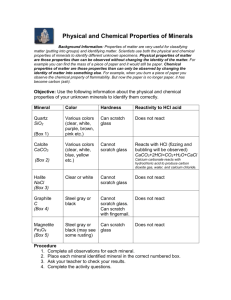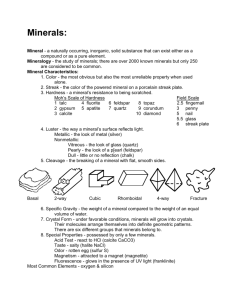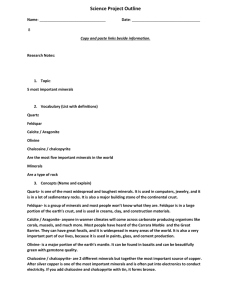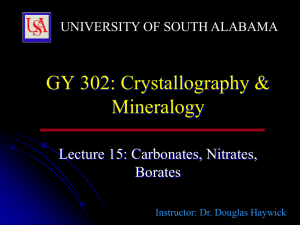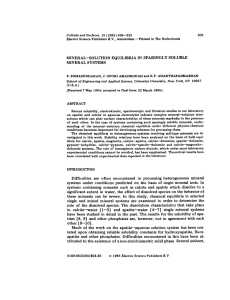Ge 114
advertisement
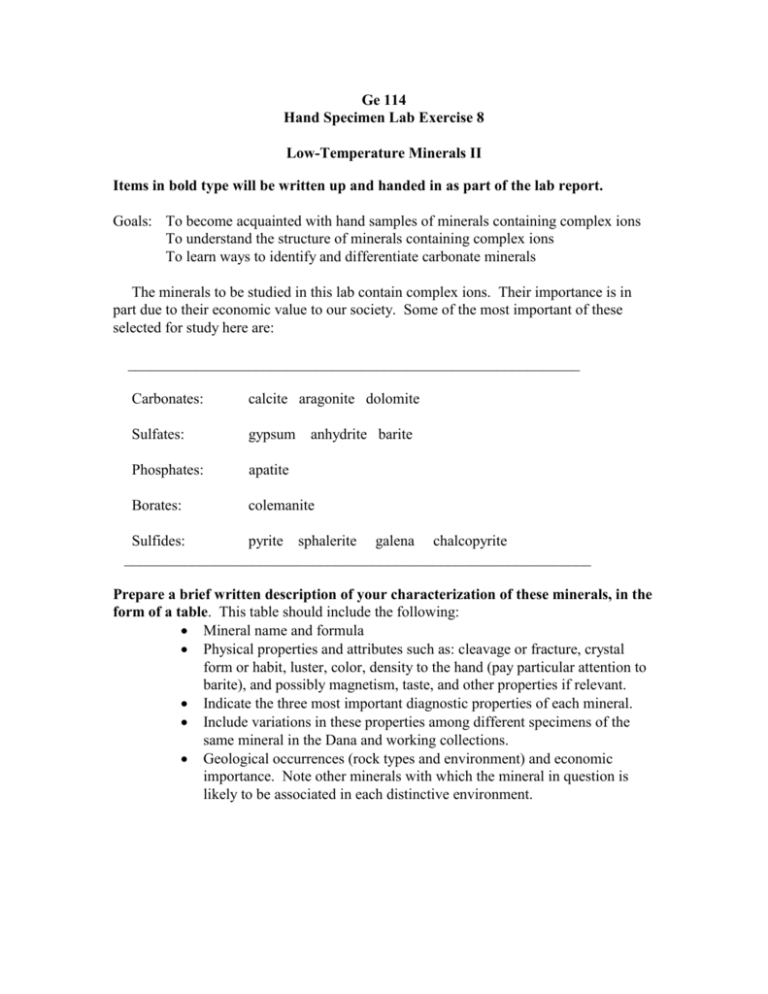
Ge 114 Hand Specimen Lab Exercise 8 Low-Temperature Minerals II Items in bold type will be written up and handed in as part of the lab report. Goals: To become acquainted with hand samples of minerals containing complex ions To understand the structure of minerals containing complex ions To learn ways to identify and differentiate carbonate minerals The minerals to be studied in this lab contain complex ions. Their importance is in part due to their economic value to our society. Some of the most important of these selected for study here are: ____________________________________________________________ Carbonates: calcite aragonite dolomite Sulfates: gypsum Phosphates: apatite Borates: colemanite anhydrite barite Sulfides: pyrite sphalerite galena chalcopyrite ______________________________________________________________ Prepare a brief written description of your characterization of these minerals, in the form of a table. This table should include the following: Mineral name and formula Physical properties and attributes such as: cleavage or fracture, crystal form or habit, luster, color, density to the hand (pay particular attention to barite), and possibly magnetism, taste, and other properties if relevant. Indicate the three most important diagnostic properties of each mineral. Include variations in these properties among different specimens of the same mineral in the Dana and working collections. Geological occurrences (rock types and environment) and economic importance. Note other minerals with which the mineral in question is likely to be associated in each distinctive environment. Other problems: 1. What are the complex ions found in each group of minerals above (i.e., carbonates, sulfates, etc.)? How is the bonding within these minerals different from that in quartz? (hint: “anisodesmic”) 2. Find a large cleavage rhomb of calcite of suitable transparency and observe the image of some writing through the calcite. What do you see? Explain this phenomenon. 3. The walls of the toilet stalls in many of the bathrooms at Caltech are made out of rock from Tennessee. A hand sample and two thin sections of this rock are included in this lab (N14-3). Determine what the dominant mineral is in this rock by examining a thin section under the petrographic microscope. Record the evidence you used to make the identification. (Do NOT use the HCl test on this rock- it is part of the permanent collection at Caltech). 4. The HCl test: Write down the chemical reaction that would take place between calcite and an acid (see Klein for help). Add a drop of dilute HCl to samples of calcite and dolomite from the working collection and observe and record the differences between the reactions. Now scratch the surface of each mineral and record your observations of these reactions. Does aragonite react with dilute HCl? If you were in the field, how could you determine if a massive marble unit was made up of calcite or dolomite, or both minerals? Wednesday, November 21, 2001


